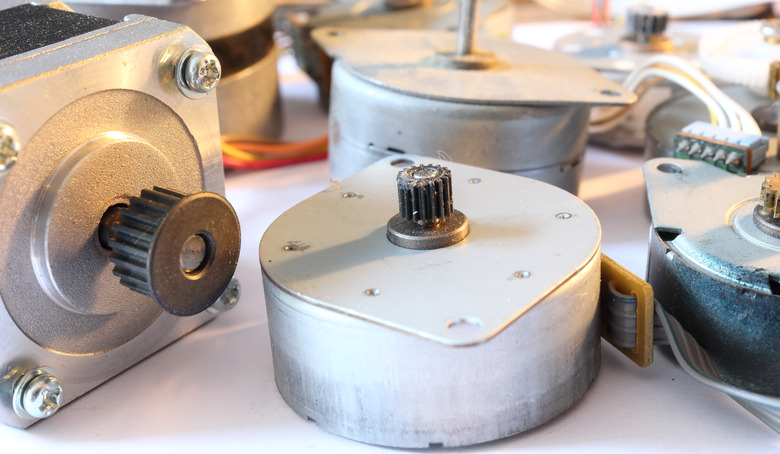How To Calculate The Field Current In A DC Motor
Direct current, or DC, electrical motors convert electric energy into mechanical energy similar to AC electric motors. The mechanical energy is then used to power everyday items such as electric hairdryers, power tools, car alternators and a variety of other tools. DC motors differ from AC motors in that they are not frequency-dependent like AC motors. AC motors require 60 hertz power that's available through 120 voltage AC outlets. DC motors are powered by batteries or nonfrequency-dependent power supplies.
Step 1
Find the DC voltage rating of the power source or the battery powering the DC motor. Refer to the specification sheet of the battery or DC power supply. For small batteries, you can find the voltage rating on the outer casing of the battery. Call this value V.
Step 2
Find the field resistance or terminal resistance of the DC motor. Refer to the schematic or the specifications of the electric motor. Call this value R.
Step 3
Calculate the field current for the motor using the formula I = V/R where I is the field current. As an example, assume V is 40 volts and R is 500 ohms: I = 40/500 = 0.08 amps.
Cite This Article
MLA
Chestnut, Dwight. "How To Calculate The Field Current In A DC Motor" sciencing.com, https://www.sciencing.com/how-to-calculate-the-field-current-in-a-dc-motor-13367447/. 19 February 2019.
APA
Chestnut, Dwight. (2019, February 19). How To Calculate The Field Current In A DC Motor. sciencing.com. Retrieved from https://www.sciencing.com/how-to-calculate-the-field-current-in-a-dc-motor-13367447/
Chicago
Chestnut, Dwight. How To Calculate The Field Current In A DC Motor last modified March 24, 2022. https://www.sciencing.com/how-to-calculate-the-field-current-in-a-dc-motor-13367447/
